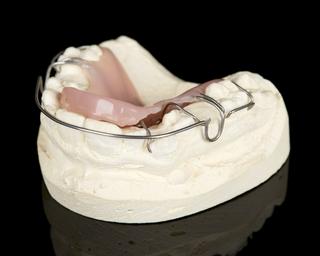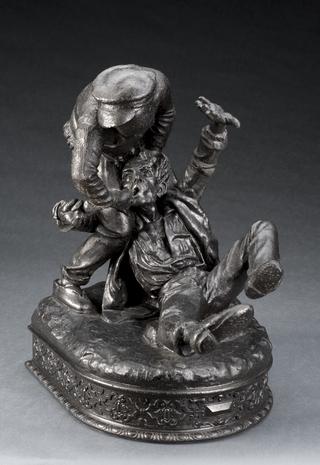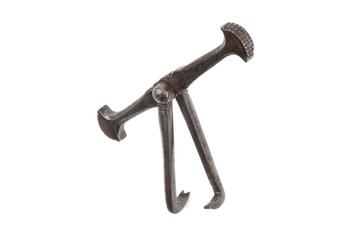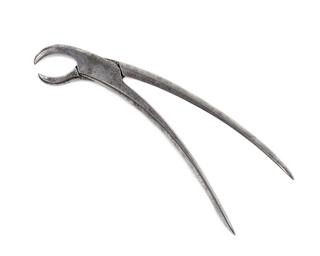
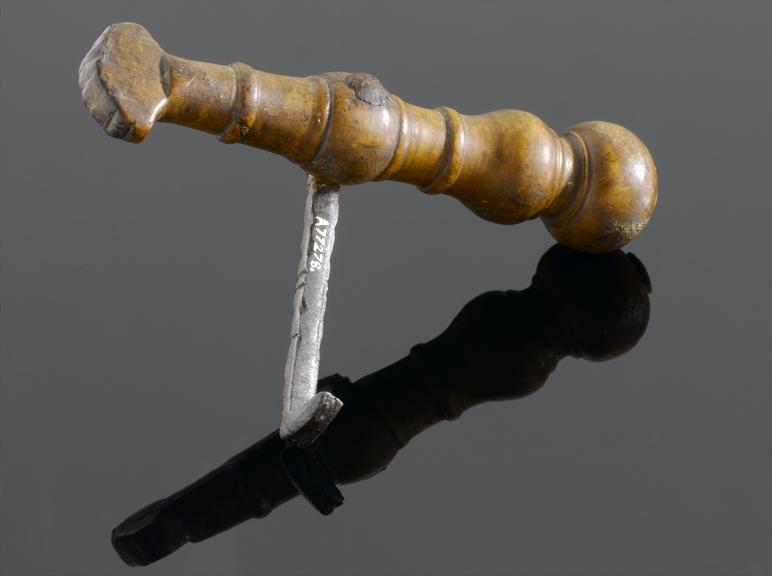
Dental pelican, simple, turned wood handle, possibly French, 1550-1750
Dental pelicans are so-called because they resemble a pelican’s beak. The instruments were used for tooth pulling – the tooth was removed sideways. The claw was placed over the top of the tooth and the fulcrum, the semi-circular piece of metal at the end, was placed against the gum. The pressure from the lever would remove the tooth. This was undoubtedly painful for the patient and possibly caused damage to the gums and surrounding teeth.
Tooth pulling was the only cure for diseased teeth and toothache and was carried out by barber-surgeons and travelling practitioners. Dentistry was not a licensed and regulated profession until the late 1800s.
Details
- Category:
- Dentistry
- Collection:
- Sir Henry Wellcome's Museum Collection
- Object Number:
- A77278
- Materials:
- handle, wood and claw, iron
- Measurements:
-
overall: 22 mm x 110 mm x 63 mm, 0.03 kg
depth: 70mm
height: 22mm
weight: 0.03kg
weight: 0.06614lbs
width: 110mm
- type:
- dental pelican
- credit:
- Maniere
